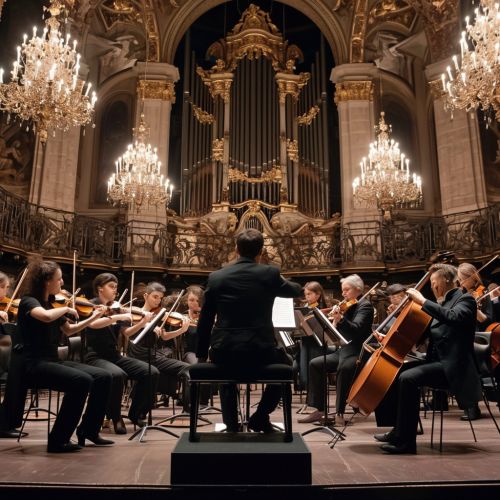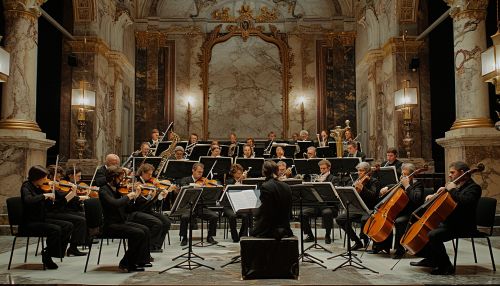Baroque Music
Origins and Characteristics of Baroque Music
Baroque music is a style of Western art music that was composed from approximately 1600 to 1750. This era followed the Renaissance music era, and was followed in turn by the Classical era. Baroque music forms a major portion of the "classical music" canon, and is now widely studied, performed, and listened to.


The term "baroque" comes from the Portuguese word barroco, meaning "misshapen pearl", a negative description of the ornate and heavily ornamented music of this period. However, the term is also used to denote the architectural and visual arts styles of the same period. The music of this period is characterized by its complex melodic lines and harmonic structures.
The most important innovation of the Baroque era was the development of basso continuo, a method of musical notation in which the melody and bass line are written out and the other parts are indicated by a numerical shorthand. This method of notation, combined with the use of a basso continuo part, resulted in an increased emphasis on vertical harmony and the interplay between voices.
Key Composers and Works
The Baroque era produced a wealth of diverse music and many great composers. Among the most notable are Johann Sebastian Bach, Antonio Vivaldi, George Frideric Handel, and Henry Purcell.
Bach is often considered the pinnacle of Baroque music, with his intricate fugues and sacred music compositions. His works, such as the Brandenburg Concertos and the Mass in B Minor, showcase the complexity and emotional depth of Baroque music.
Vivaldi, an Italian composer, is best known for his violin concertos, particularly The Four Seasons. These works are exemplary of the Baroque style, with their dramatic contrasts and virtuosic violin parts.
Handel, a German-born composer who spent much of his career in England, is known for his operas, oratorios, and concerti grossi. His most famous work, Messiah, remains a staple of choral music today.
Purcell, an English composer, is known for his innovative use of counterpoint and harmony. His opera Dido and Aeneas is considered one of the greatest works of the English Baroque.
Instruments and Forms
Baroque music expanded the size, range, and complexity of instrumental performance, and also established the mixed vocal/instrumental forms of opera, cantata and oratorio and the instrumental forms of the solo concerto and sonata as musical genres.
Many instruments, like the violin, were standardized during the Baroque period. Many other instruments, like the recorder, the harpsichord, and the organ, were commonly used during this period, as well.
The concerto was developed during the Baroque period, with the concerto grosso, a form for multiple soloists, being a popular form. The sonata, a form for one or two instruments, also emerged during this period.
Influence and Legacy
The Baroque period was a time of experimentation and innovation in music. The development of new musical forms and styles, as well as the evolution of existing ones, had a profound impact on the music that followed.
The influence of Baroque music can be seen in the works of later composers, such as Wolfgang Amadeus Mozart and Ludwig van Beethoven, who were inspired by the complex structures and rich harmonies of Baroque music.
The legacy of Baroque music is also evident in the modern day, with many pieces from this period still being performed and recorded. The music of this period continues to be a source of inspiration for musicians and composers.
